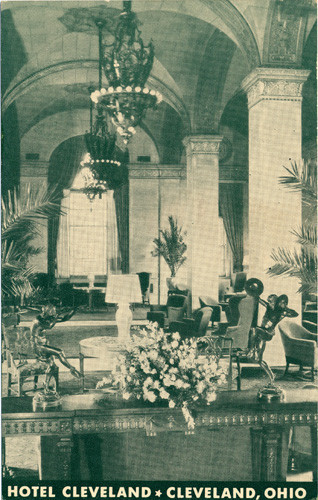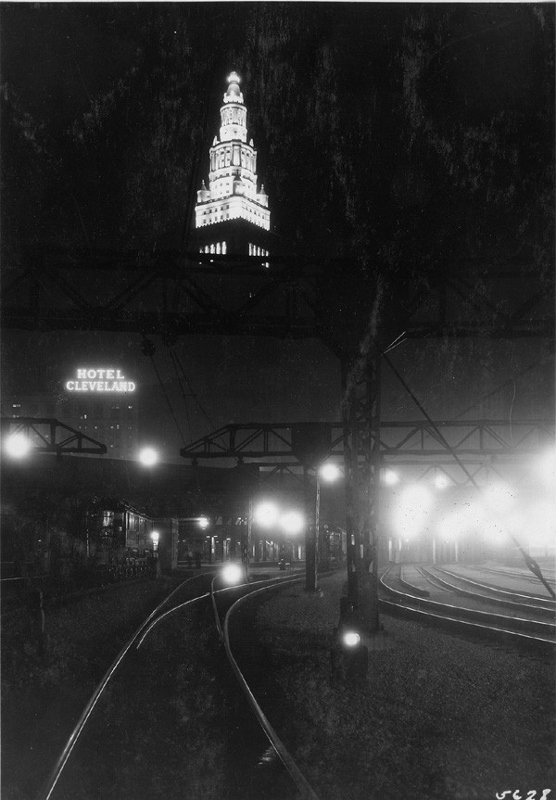
Shaped like an "E" opening onto Superior Avenue, Hotel Cleveland was built in 1918 by the Van Sweringen brothers on the corner of Superior and Public Square. The hotel was built long before the construction of the adjacent Cleveland Union Terminal (dedicated in 1930). The site where the new Hotel Cleveland was built already had a long and proud history of lodging and hospitality. A popular tavern and hotel had existed on this site since 1812. The older structure was destroyed by a fire in 1840, but was rebuilt that same year.
The former structure had at various times been called the Forest City House and the Cleveland Hotel. By 1915, the old building was run down. In an attempt to revitalize the Public Square area, investors closed the old hotel and built a new 1,000-room Hotel Cleveland at a cost of $4.5 million. The Van Sweringen brothers purchased the hotel to make it part of their Cleveland Union Terminal complex in the 1920s. They reinforced the structure and dug a tunnel underneath the building to accommodate their rapid transit project. Subsequently, Hotel Cleveland became an integral part of the Union Terminal complex. The exterior of the hotel also served to balance the Terminal Tower building which was set at an angle on Public Square.
The fortunes of both the hotel and the Van Sweringen brothers diminished during the Great Depression. Whereas the Vans' empire fell apart, Hotel Cleveland and the Terminal Tower both survived the economic tempest. In 1958, the Sheraton chain acquired the hotel. The new owner promptly renamed the hotel the Sheraton-Cleveland and installed a new $5.2 million ballroom as part of its renovation. New owners and a new name did not guarantee success, however. The changing nature of Cleveland's downtown — transitioning from a retail focus toward offices and services — soon began to take its toll, causing the hotel to falter during the 1960s.
The hotel kept up its tradition of changing names and owners. Beginning in 1978, and managed by Stouffer Corp., the refurbished hotel reopened as Stouffer's Inn on the Square. In 1989, anticipating the opening of a new shopping mall in the old Terminal concourses, it was renamed the Stouffer-Tower City Plaza. Only four years later, in 1993, the hotel changed hands yet again. Purchased by Renaissance International, it became known as the Stouffer Renaissance Cleveland Hotel. In early 1996, the hotel dropped the Stouffer affiliation and became simply the Renaissance Cleveland, part of Marriott's Renaissance brand. After losing this affiliation for a few years, in 2023 it underwent an extension remodeling in preparation to reopen in 2024 as part of Marriott's Autograph Collection under its original name, Hotel Cleveland.
Images










